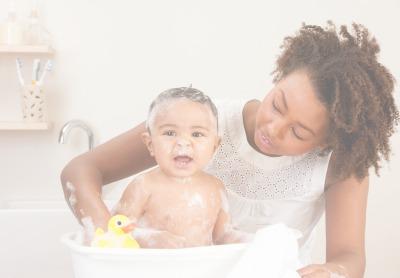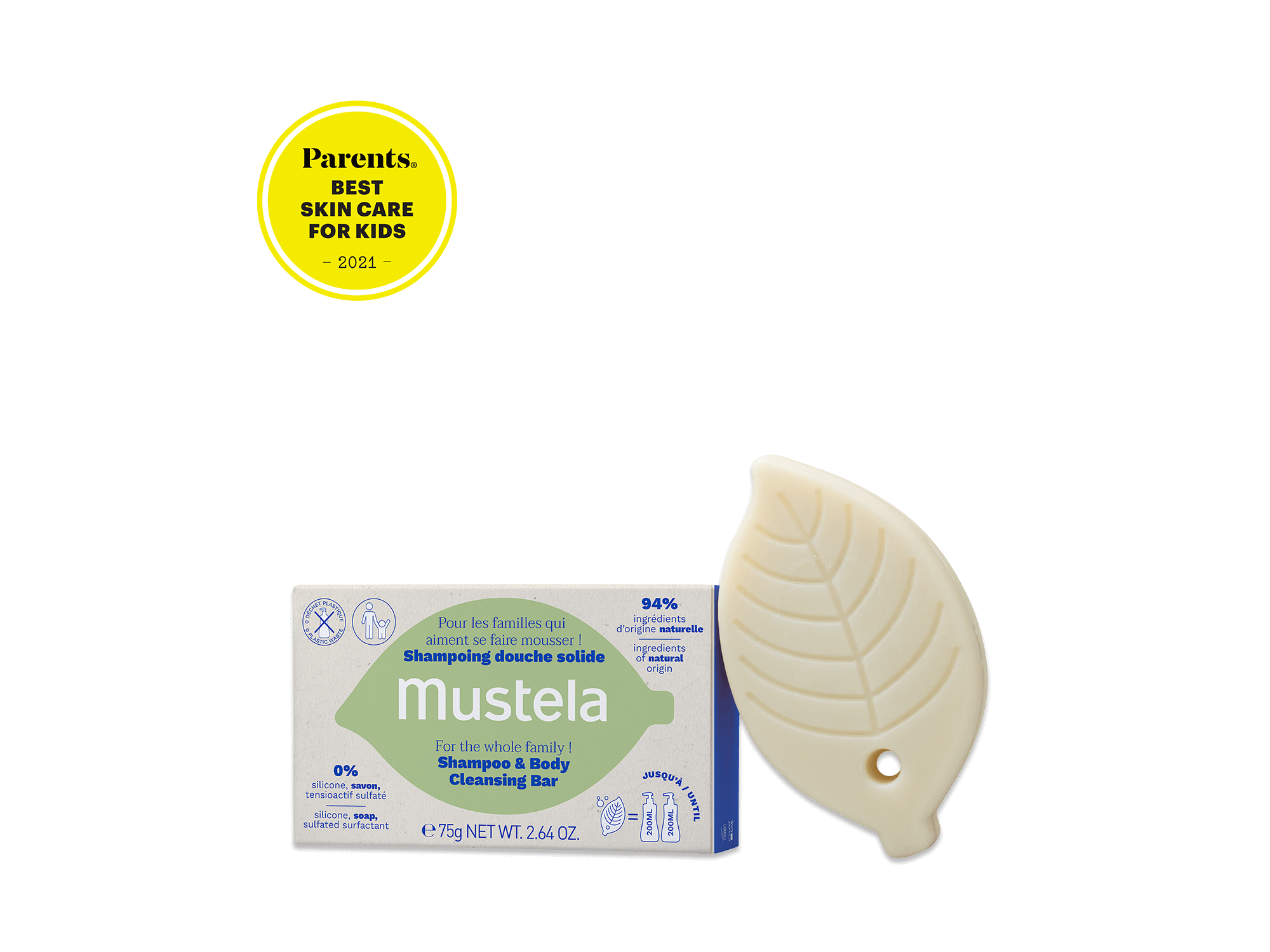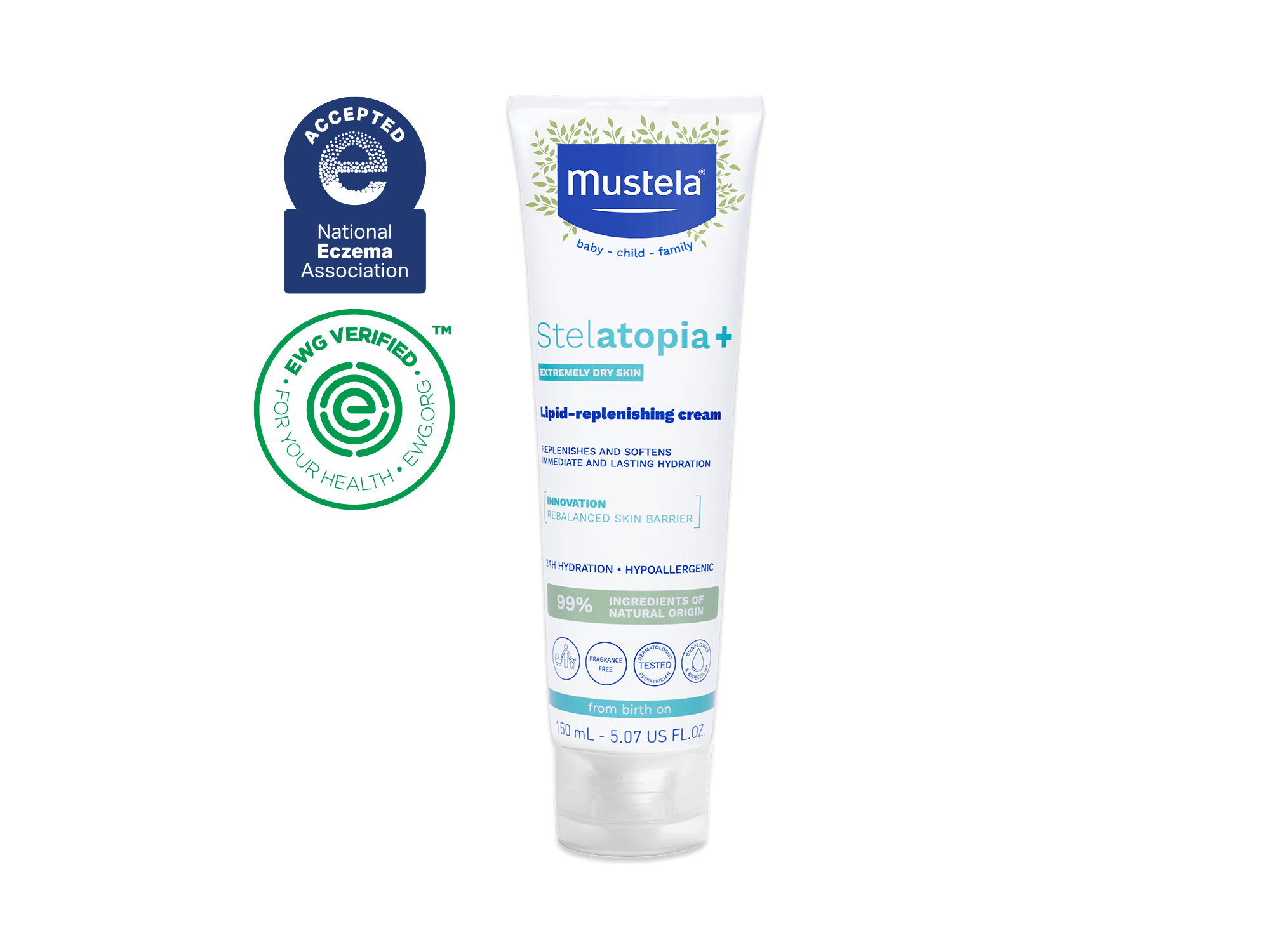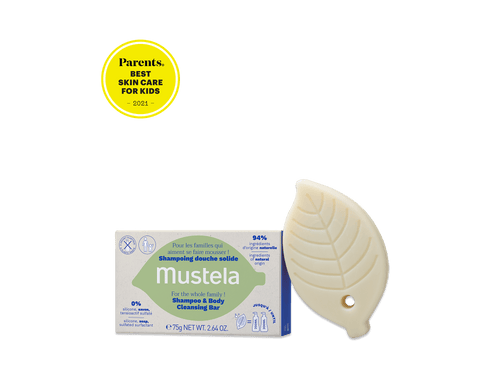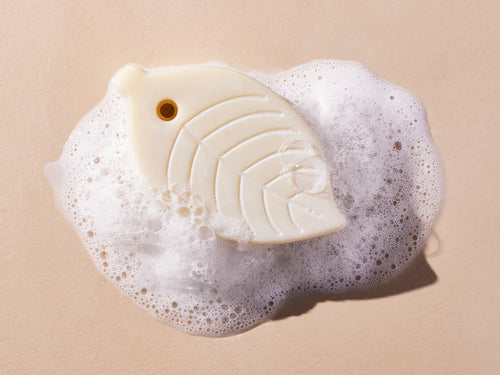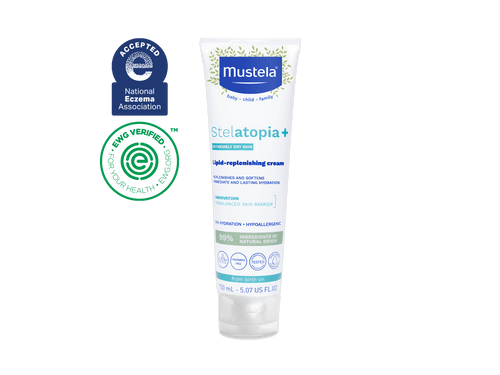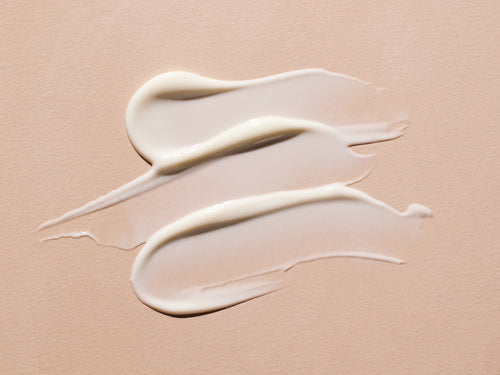Daily skin care is one of the most important aspects of your baby’s health and happiness, even when your little one’s skin has no apparent problems. But how do you know the right way to keep your baby’s skin soft, smooth, and healthy? Mustela’s skin experts are here to help! In this article, we’ll show you how to:
- Recognize normal baby skin.
- Understand the science behind developing skin.
- Provide the best skin care possible for your little one.
Let’s start at the beginning and talk about what qualifies as “normal” baby skin.
Recognizing Normal Baby Skin
Your baby’s skin is a protective covering against the outside world. It shields your little one’s delicate body from the sun’s harmful rays, blocks toxins and allergens that float in the air, and helps regulate body temperature.
Your baby’s skin also helps them interact with the world. Their sense of touch starts with their skin and allows them to connect with you emotionally and physically. Because your baby’s skin performs these important functions, it needs continuous care and attention.

But what’s considered normal baby skin? Here are some factors to look for:
- Normal baby skin is soft.
- Normal baby skin is supple.
- Normal baby skin is silky to the touch.
- Normal baby skin has no irregularities.
- Normal baby skin has no obvious signs of dryness.
- Normal baby skin has no obvious sensitivities.
Now that we know what normal baby skin is, let’s turn our attention to the science behind this important organ.
Understanding The Science Behind Developing Skin

Normal Baby Skin Is Delicate
On the surface, your baby’s normal skin looks beautiful and perfect. But underneath, your little one’s skin is extremely delicate. That’s because newborns have an underdeveloped or thin hydrolipidic barrier.
What’s the hydrolipidic barrier, and why is it important? Basically, this crucial barrier is composed of oil and water, and it serves to protect the top layer of skin against irritation.
Additionally, a thin hydrolipidic layer can allow moisture to escape from the skin underneath. This means that your baby is more susceptible to skin damage from environmental factors like:
- The sun’s UV rays
- Pollutants, bacteria, and allergens in the air
- Wind
- Chemicals in the water
When it comes to moisture, your baby’s body produces its own from the foods and liquids they consume. This moisture spreads through your little one’s body in their blood. The skin then absorbs the moisture from the blood and transports it through the lower layer (the hypodermis), the middle layer (the dermis), and ultimately, to the top, outermost layer (the epidermis).
After the moisture’s long journey through your baby’s body, there isn’t much left over for their skin. To compound the negative effects even further, what little moisture is on your baby’s skin evaporates quickly because of their thin hydrolipidic layer.
This can lead to even more dryness and can even result in cracked and scaly skin. That’s why it’s so important to keep your baby’s skin moisturized until their body matures enough to protect itself completely.
Normal Baby Skin Is Resilient

The good news is that your baby’s young skin has one thing going for it: stem cells. Stem cells are undifferentiated, which means that they can become any one of a number of specialized cells in the human body. Stem cells also have the unique ability to divide and produce yet more stem cells.
At birth, your baby’s skin has a reserve of stem cells. That reserve of stem cells means your little one’s skin can regenerate and repair itself quickly and efficiently—despite the harshness of UV rays, pollutants, bacteria, allergens, wind, and chemicals.
Essentially, stem cells compensate for the hydrolipidic layer until it’s fully developed around age two. Even though your baby’s skin is fragile and vulnerable because of the immature protective layer, it’s resilient because of the reserve of stem cells.
Another important thing to remember is that the dryness and skin damage mentioned earlier are minor and usually only manifest as sensitive skin. As your baby ages, their skin will continue to develop and mature. But from birth to about age two, your baby’s skin is not yet able to retain the proper level of moisture it needs to function at 100 percent. This means that your little one’s skin needs extra attention and care from you.
So how can you give your baby’s skin the special TLC it needs to stay healthy? Read on to find out.
Providing The Best Skin Care Possible For Your Baby

The best way to care for and protect your baby’s delicate skin is to apply a baby-safe, moisturizing product every day. We recommend Mustela’s Hydra Bebe Body Lotion. This clinically-tested, dermatologist-approved product contains a gentle-yet-powerful combination of ingredients of natural origin per ISO 16128 standard, including:
- Jojoba oil
- Sunflower oil
- Vitamin E
- Vitamin F
- Almond oil
- Shea butter
- Avocado perseose
This last ingredient—avocado perseose—is particularly beneficial because it:
- Forms a protective barrier on the surface of the skin
- Aids the development of the hydrolipidic layer
- Maintains skin hydration level
- Protects the skin’s cellular resources
Beneficial ingredients aren’t limited to creams and oils when it comes to your baby’s skin care. You can also protect your little one during bath time with Bubble Bath and 2-In-1 Cleansing Gel. Lastly, don’t neglect the extremely sensitive skin of your baby’s diaper area. Mustela products like Cleansing Wipes and Liniment can help keep this area rash-free.
Even if your baby’s skin qualifies as normal, it’s important to maintain a proper routine to care for it. With the right products and a little extra TLC, you can keep your little one’s skin soft and healthy.



